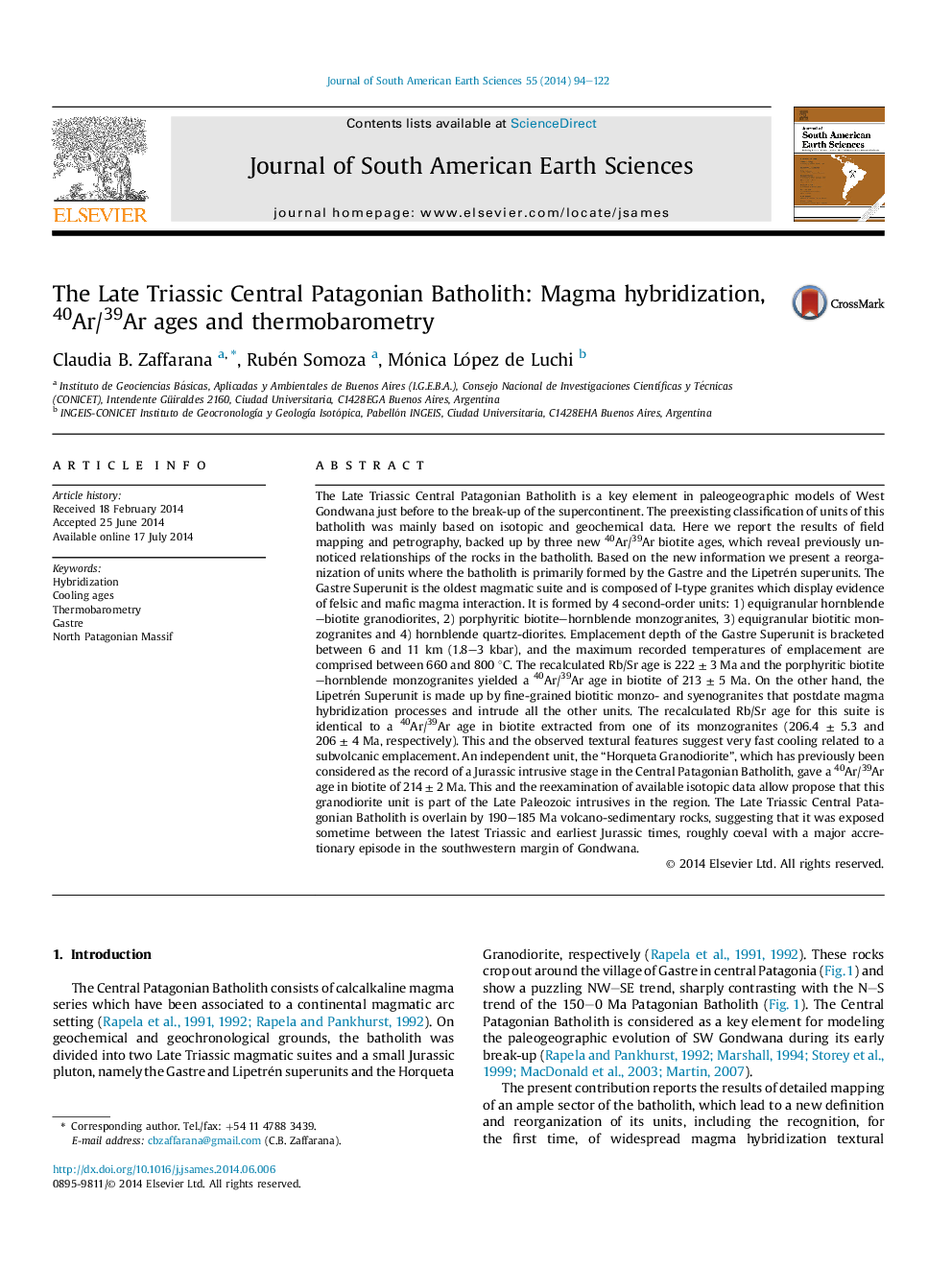| کد مقاله | کد نشریه | سال انتشار | مقاله انگلیسی | نسخه تمام متن |
|---|---|---|---|---|
| 4682302 | 1635154 | 2014 | 29 صفحه PDF | دانلود رایگان |

• The Central Patagonian Batholith consists of the Gastre and Lipetrén superunits.
• The Gastre Superunit yielded a 40Ar/39Ar age in biotite of 213 ± 5 Ma.
• The Gastre Superunit shows magma hybridization processes.
• The Lipetrén Superunit is composed of biotitic granites with miarolitic cavities.
• The Lipetrén Superunit yielded a 40Ar/39Ar age in Bt of 206 ± 4 Ma.
The Late Triassic Central Patagonian Batholith is a key element in paleogeographic models of West Gondwana just before to the break-up of the supercontinent. The preexisting classification of units of this batholith was mainly based on isotopic and geochemical data. Here we report the results of field mapping and petrography, backed up by three new 40Ar/39Ar biotite ages, which reveal previously unnoticed relationships of the rocks in the batholith. Based on the new information we present a reorganization of units where the batholith is primarily formed by the Gastre and the Lipetrén superunits. The Gastre Superunit is the oldest magmatic suite and is composed of I-type granites which display evidence of felsic and mafic magma interaction. It is formed by 4 second-order units: 1) equigranular hornblende–biotite granodiorites, 2) porphyritic biotite–hornblende monzogranites, 3) equigranular biotitic monzogranites and 4) hornblende quartz-diorites. Emplacement depth of the Gastre Superunit is bracketed between 6 and 11 km (1.8–3 kbar), and the maximum recorded temperatures of emplacement are comprised between 660 and 800 °C. The recalculated Rb/Sr age is 222 ± 3 Ma and the porphyritic biotite–hornblende monzogranites yielded a 40Ar/39Ar age in biotite of 213 ± 5 Ma. On the other hand, the Lipetrén Superunit is made up by fine-grained biotitic monzo- and syenogranites that postdate magma hybridization processes and intrude all the other units. The recalculated Rb/Sr age for this suite is identical to a 40Ar/39Ar age in biotite extracted from one of its monzogranites (206.4 ± 5.3 and 206 ± 4 Ma, respectively). This and the observed textural features suggest very fast cooling related to a subvolcanic emplacement. An independent unit, the “Horqueta Granodiorite”, which has previously been considered as the record of a Jurassic intrusive stage in the Central Patagonian Batholith, gave a 40Ar/39Ar age in biotite of 214 ± 2 Ma. This and the reexamination of available isotopic data allow propose that this granodiorite unit is part of the Late Paleozoic intrusives in the region. The Late Triassic Central Patagonian Batholith is overlain by 190–185 Ma volcano-sedimentary rocks, suggesting that it was exposed sometime between the latest Triassic and earliest Jurassic times, roughly coeval with a major accretionary episode in the southwestern margin of Gondwana.
Journal: Journal of South American Earth Sciences - Volume 55, November 2014, Pages 94–122